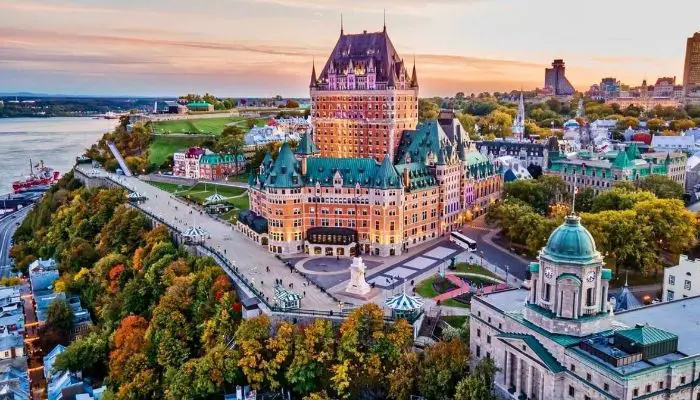French-speaking Québec City, the only walled city in North America and a UNESCO World Heritage Site, is strategically situated atop sheer cliffs that look out over the St. Lawrence River. At the site of the current Place Royale, a fur trade colony was established in 1608. It swiftly developed into an administrative hub and is now the capital of the province of Things To Do In Quebec City and one of Canada’s most picturesque cities.
The military advantage of the Upper Town, also known as Haute-Village, led to the construction of the defensive Citadel as well as some of the city’s most recognisable structures, including the Château Frontenac and City Fortifications.
The initial settlement was in the Lower Town (or Basse-Ville), which is renowned for its scenic, winding alleyways and ancient stone structures. Place Royale and the Quartier Petit Champlain are located here. From the Upper Town to the Lower Town, a number of steep streets descend, making the entire area simple to explore on foot. The St. Lawrence River is at the base, adding to the beauty of the scene.
10 Best Attractions & Things To Do In Quebec City
The Québec-Levis Ferry dock is accessible from here, and other tourist sites, like the Musée de la Civilisation, can be found nearby. The funiculaire, a few narrow staircases, and meandering streets connect the higher and lower sections.
Use our list of the top tourist destinations in Quebec City to help you plan your next vacation.
1. Fortifications of Quebec National Historic Site
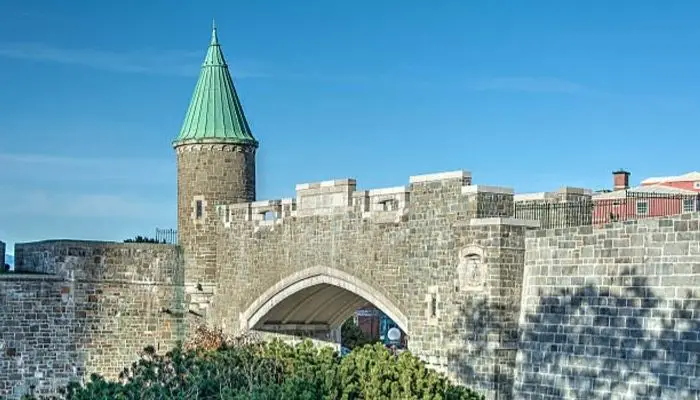
Québec has accumulated a variety of fortifications throughout the course of its more than 300-year history, all of which may be seen on an hour-long round tour. The numerous antique cannons, walls, towers, gates, and bastions serve as evidence of how well-defended the former French colony was.
The only fortifications of this type in North America, the four and a half kilometres of defensive walls on the west flank of the Old City were built of granite and sand and finished in 1832. A continuous reminder of Québec’s tumultuous past are several weapons.
2. Observatoire de la Capitale (Capital Observatory)
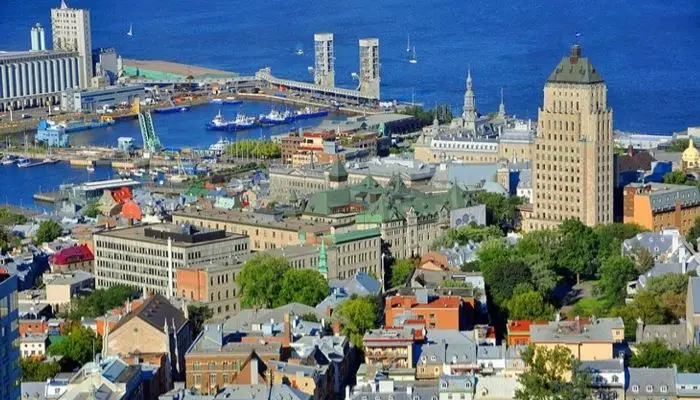
This 360-degree observatory, located atop the Marie-Guyart Building, offers more than simply a cityscape from the 31st floor. With a section exclusively for youngsters, interactive exhibits show how Québec City evolved and expanded throughout the centuries. The view encompasses Levis, the St. Lawrence, and Île d’Orléans in addition to the historic walled city.
The Funicular, which Québec City uses to navigate around the city because of how hilly it is, offers fantastic views of the entire city as well. In order to relieve weary passengers from climbing high steps, a funicular runs from Quartier Petit-Champlain in the lower town to Château Frontenac in the upper town. Since 1879, it has been moving people at a startling 45-degree angle, and the most recent modification, glass-walled elevator carriages, was made in 1998.
3. Basilica of Sainte-Anne-de-Beaupré
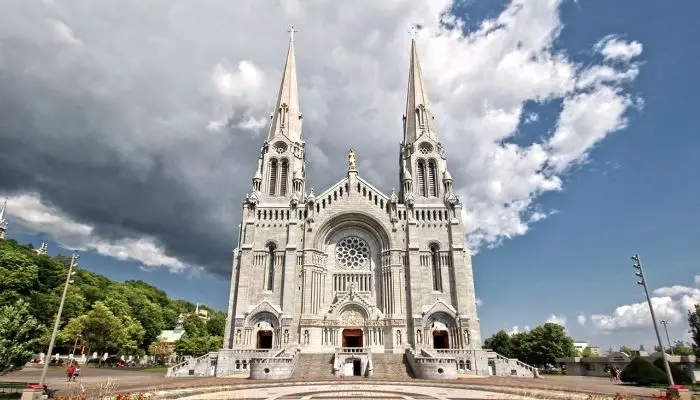
The patron saint of Quebec, Sainte Anne, is credited with several healing miracles for the sick and handicapped. A half million pilgrims visit this magnificent Catholic basilica each year, which is situated in Beaupre, northeast of Québec. The first chapel was constructed on this location in the 17th century, although the current building dates from 1926.
The Cathedrale Notre-Dame-de-Quebec, which was built in 1844 and was designed by architect Baillairgé, is another well-known Catholic basilica. With a lovely altar, an Episcopal canopy, and stained-glass windows, Notre-Dame de Québec’s interior is particularly magnificent.
4. Parliament Building (Hotel du Parlement) & Parliament Hill
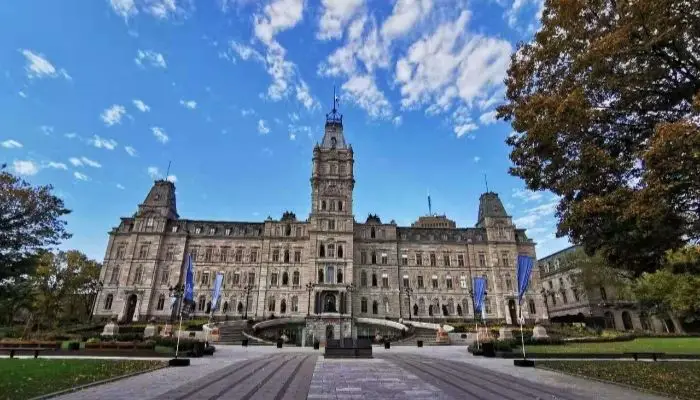
The provincial capital of Québec is located in the openly planned area to the southwest of the historic Upper Town. The Parliament, which was finished in 1877 but later expanded, could have been based on a variety of public structures in Paris. Both the National Assembly and Legislative Council chambers are accessible to the general public. Both are elegant, antique rooms that have lavish furnishings. It is advisable to purchase tickets in advance.
The Grand Théâtre and the sizable Palais des Congrès shopping and entertainment complex are both nearby. The Grand Théâtre is a location for plays, concerts, and symphony performances.
5. Château Frontenac
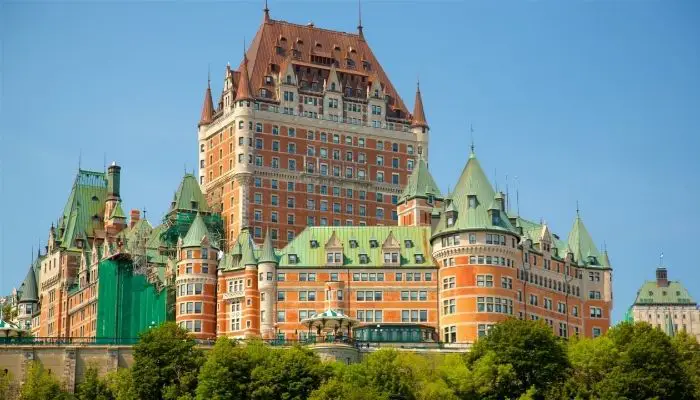
The Grand Fairmont Le Château Frontenac, which was originally constructed in 1894 for the Canadian Pacific Railway, is now one of the city’s most recognisable landmarks and esteemed hotels. This old building is clearly visible from a great distance and is especially beautiful at night.
The Terese Dufferin hotel has breathtaking views of the Laurentian Mountains to the north and the Citadel and Plains of Abraham to the south from its front porch. The original location of Fort Saint-Louis, the governor’s residence during colonial times, was this vantage point. The ruins beneath the promenade are visible to tourists.
6. Visit Musée de la civilisation
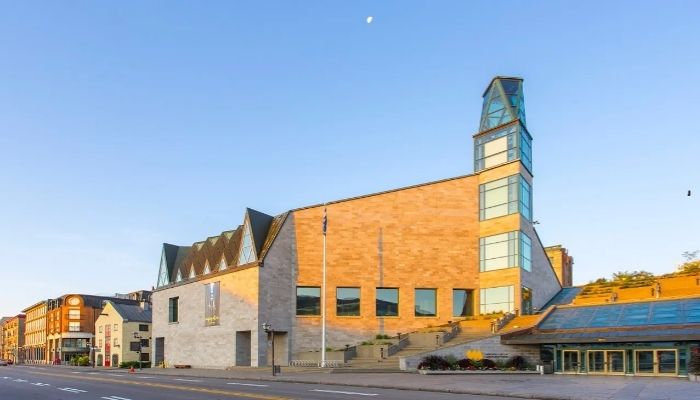
The three-part Musée de la civilisation in Québec City explores the numerous dimensions of human history and the founding of French America. Its main museum is situated in Basse-Ville, close to the Old Port. The main museum has a fascinating architectural design that was created by renowned architect Moshe Safdie. The permanent collection explores the experience of Quebec while also drawing inspiration from other civilizations.
Located in Upper Town’s ancient Séminaire de Québec, the Musée de l’Amérique Francophone (Museum of French America) is a cultural institution. The museum covers all facets of the history of the French in North America, as suggested by its name.
7. Stroll through Quartier Petit Champlain
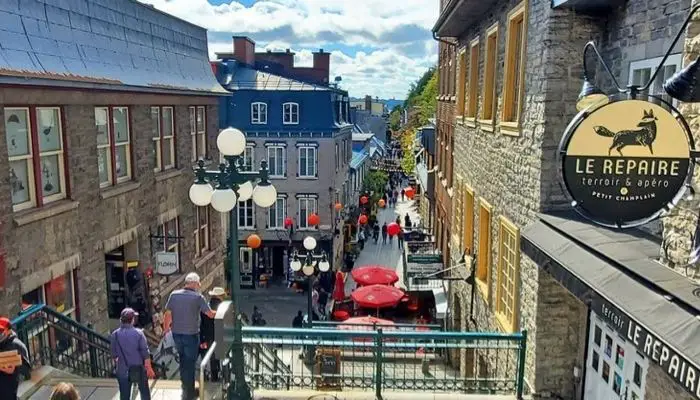
The Quartier Petit Champlain is considered the most picturesque part of the city, having once served as New France’s thriving capital. You get the impression that you are in the centre of an ancient European city as you wander the tiny alleyways that wind between the antique buildings.
Nowadays, a diverse range of stores, services, and restaurants are housed in the stone buildings that border the pedestrian-only lanes. This is a wonderfully beautiful region all year round and is the ideal destination for wandering and wondering.
Tourists can discover artisan stores, bistros and restaurants serving Québec cuisine, art galleries, and a wide range of confectioneries selling everything from handmade fudge and nougat to a chic Crêperie. Unique items can be purchased in the local clothing boutiques, which range from those who sell just alpaca products to those.
8. See the Plains of Abraham (Champs de Bataille)
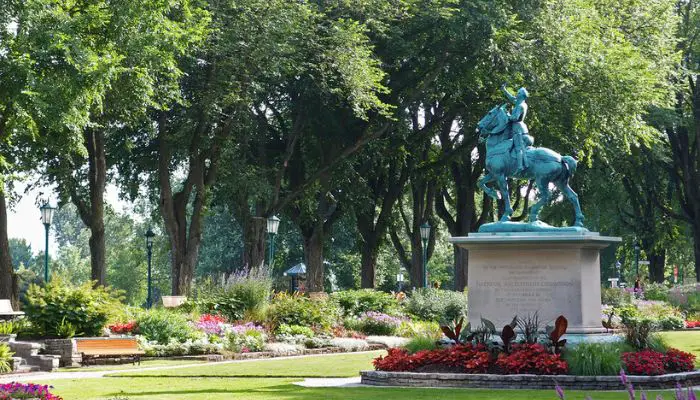
The lush Plains of Abraham (Champs de Bataille), west of the Citadel and outside the city walls, is where the British under General Wolfe defeated the French under Montcalm in 1759. Exhibits recount the turbulent history of how Québec City resisted the British before succumbing to them.
Two Martello tower ruins, later extensions to Quebec’s defences, may be found in the park. The Louis Perron-designed Joan of Arc Garden, which was first constructed in the late 1930s, features stunning flower displays from spring to fall.
Children will like the museum’s interactive exhibits, which enable younger visitors to connect with history, and families with young children will enjoy their time together.
9. Explore La Citadelle de Québec
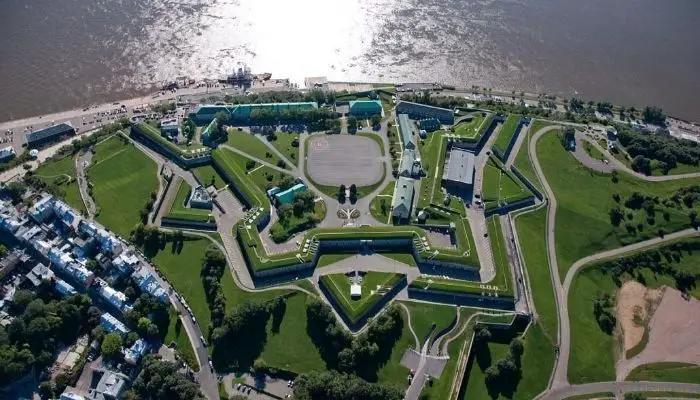
Cap Diamant, a 100-meter-tall mountain that rises abruptly from the west and faces the St. Lawrence River, commands a vast and varied vista. The huge, star-shaped Citadel of Québec, constructed in 1832 and guarded by high walls, ramparts, and ditches, sits atop this. The Citadel, which is still a functioning military outpost, serves as the Governor General of Canada’s summer home as well as military housing for generals, officers, and service members.
The 22nd Canadian Regiment, which was established at the start of the First World War and has a notable history, also has its headquarters here. The regiment saw action here during the Battle of the Somme and, much later, the Korean War.
10. Wander through Place Royale
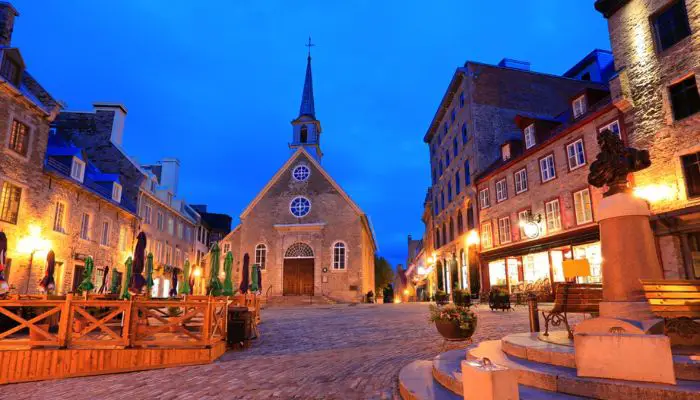
The historical significance of the area as well as the contemporary atmosphere created by the restaurants, patios, and stores that currently occupy the old buildings make it a popular destination for tourists in Québec.
The location of Place Royale is where Québec was actually founded, where Samuel de Champlain built a fur trading post in 1608 that quickly developed into the nation’s capital. Place Royale, so named in honour of Louis XIV whose bust is displayed there, is North America’s biggest remaining collection of 17th- and 18th-century structures.
The neighbourhood has outside dining spaces in the summer. The stone buildings and quaint streets are transformed into a picture-perfect image in the winter by the snow. This is a lovely spot to explore throughout the day or at night, and at any time of year.

